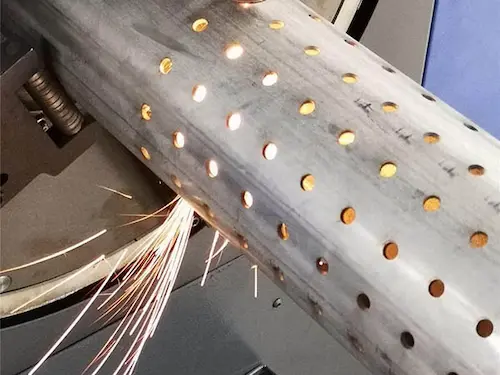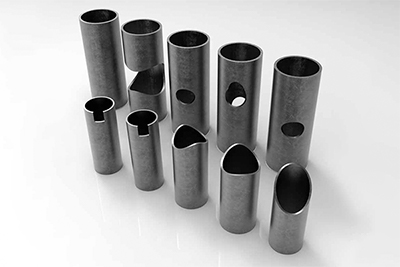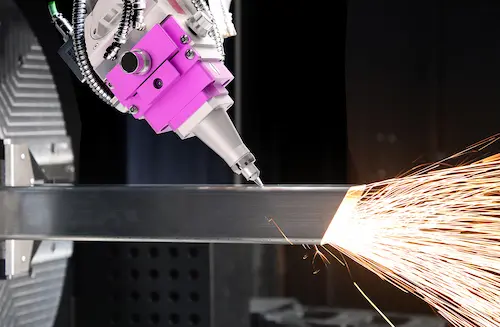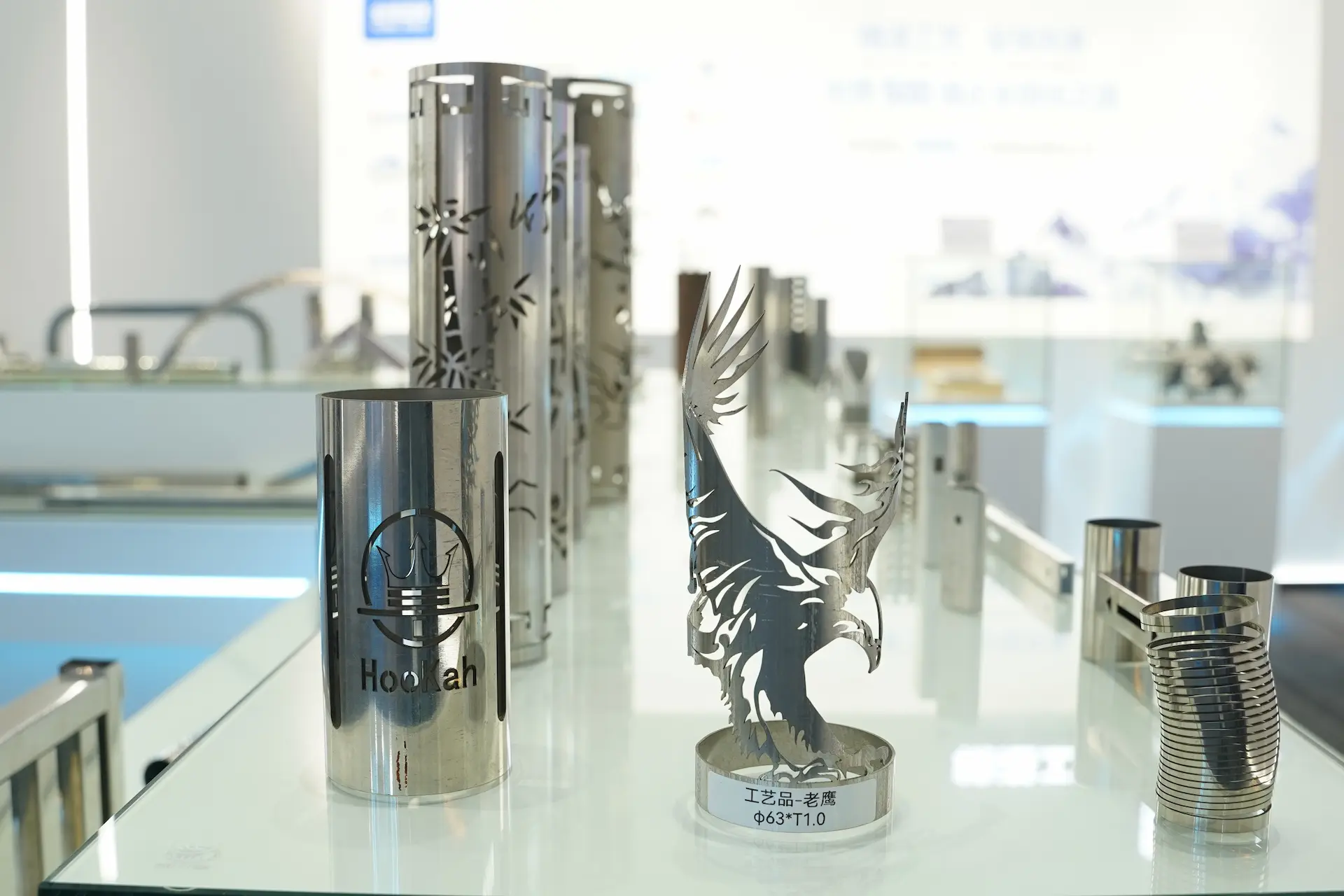En el mundo de la manufactura moderna, la tecnología láser ha revolucionado la forma en que procesamos los tubos de metal. De alta precisión increíble eficiencia, corte por láser ofrece una multitud de ventajas frente a los métodos tradicionales. En este sentido, explorar, de los cinco de corte por láser de los procesos utilizados para tubos de metal, detallando sus tipos, aplicaciones y beneficios.
1. Perforación por láser de Tubos

Perforación por láser es un material avanzado de procesamiento de la tecnología que utiliza la densidad de alta energía de rayos láser de precisión crear agujeros en materiales. Hay varios tipos de láser de perforación:
- Solo Pulso De Perforación: Ideal para materiales delgados, este método utiliza una sola de alta energía de pulso para crear un agujero.
- El Sondeo Por Percusión: Implica múltiples pulsos para la eliminación gradual de los materiales.
- Helicoidal De Perforación: Adecuado para gran diámetro, agujeros profundos, este método crea una trayectoria en forma de espiral.
- Trepan Perforación: Se inicia con un primer agujero y luego se expande el diámetro.
Aplicaciones:
- La Fabricación Industrial: Micro-agujero en el procesamiento de metales y cerámicas.
- Electrónica: Perforación de micro-agujeros en el Pcb y los circuitos integrados.
- Los Dispositivos Médicos: La precisión de la perforación para médicos de catéteres.
- Aeroespacial: La creación de agujeros en materiales compuestos y de alta temperatura de aleaciones.
- Nueva Energía: Micro-agujero de procesamiento de litio de la batería de separadores.
Ventajas Clave:
- Velocidad De Procesamiento: Alta eficiencia.
- Gran Profundidad a la Relación Diámetro: Excelente para agujeros profundos.
- Material Versatilidad: Adecuado para el duro, quebradizo y materiales blandos.
2. Tubo De Corte Por Láser

Láser de corte de tubos es una técnica avanzada con diferentes tipos de proceso y beneficios significativos. He aquí un vistazo más de cerca a los tipos principales:
- De Corte Láser CO2: Adecuado para los no-metal y algunos tubos de metal.
- De Corte Por Láser De Fibra: Ideal para todos los tipos de tubos de metal, especialmente materiales reflectantes.
- 3D Tubo de Corte por Láser: Capaz de cortar formas complejas y ángulos.
- Eje De Rotación De Corte: El tubo gira, mientras que el láser es fijo, perfecto para circunferencial cortes.
- Volando Óptica De Corte: La cabeza del láser se mueve mientras la pieza de trabajo es fijo, adecuado para grandes o pesados tubos.
Ventajas:
- De Alta Precisión: Corte de precisión de hasta ±0,05 mm.
- Excelente Calidad De Corte: Suave, libre de rebabas de los bordes con un mínimo de zonas afectadas por el calor.
- De Alta Velocidad: De 3 a 5 veces más rápido que los métodos tradicionales.
- Flexibilidad: Rápido los cambios en el programa para satisfacer las diversas necesidades de producto.
- Sin Contacto De Procesamiento De: Reduce la deformación del material y de la contaminación.
- Multi-Funcionalidad: Capacidad de corte, de perforación, y de asignación.
- Eco-Friendly: Alta eficiencia energética sin la necesidad de refrigeración de líquidos.
Aplicaciones:
- Automotriz: Sistemas de escape, las líneas de combustible, componentes del chasis.
- Aeroespacial: Ligero estructural de componentes, piezas del motor.
- Construcción: Estructuras de acero, decorativos, tubos.
- Muebles: Marcos de Metal para las sillas y mesas.
- Los Dispositivos Médicos: Instrumentos de precisión y los implantes.
- Electrónica: Los disipadores de calor, cerramientos.
- Equipamiento De La EnergíaDe la batería : carcasas, líquido de enfriamiento de placas.
- Equipo De La Aptitud: Estructuras tubulares.
- La Señalización De La Publicidad: Metal letras y logotipos.
3. Tubo De Corte En Bisel

Bisel de corte con láser es un sofisticado procesamiento de metales técnica que permite el corte de las inclinado o en superficies inclinadas. Este método puede lograr ángulos de bisel de 1° a 45°, la producción de formas complejas, tales como V, Y, X, y K.
Aplicaciones:
- Pre-Preparación De La Soldadura: Mejora la fuerza de la soldadura y de calidad.
- Estructuras De Acero: Puentes, edificios, vigas a la vista.
- Tubería De Fabricación: Precisión de ajuste de las uniones de las tuberías.
- Automotriz: Paneles de la carrocería, piezas de la suspensión.
- La construcción naval: Corte de las placas del casco y estructuras de la articulación.
- Aeroespacial: Garantiza la integridad estructural y fiabilidad de componentes de aeronaves.
Ventajas Clave:
- De Alta Eficiencia: Más rápido que los tradicionales métodos mecánicos, completar varios pasos en una sola vez.
- De Alta Precisión: Precisa bisel formas y ángulos, con el corte de precisión de hasta ±0,05 mm.
- Excelente Calidad De Corte: Suave, libre de rebabas de los bordes con un mínimo de zonas afectadas por el calor.
- Flexibilidad: Quick programa de ajustes para diversos requisitos de los productos.
- Amplia Compatibilidad De Los Materiales: Trabaja con diversos metales como acero inoxidable, aluminio y aleaciones de titanio.
- Reducción De Post-Procesamiento: Directamente cortes complejo bisel formas, la reducción adicional de molienda y el procesamiento de los pasos.
- Mejorada Calidad De La Soldadura: Precisa la corte en bisel mejora la fuerza y la calidad de las uniones soldadas.
- Eco-Friendly: Alta eficiencia energética sin la necesidad de refrigeración de líquidos.
4. Tubo de Láser de Corte y roscado
En el mundo de la fabricación industrial, la eficiencia y la precisión son la clave. Es por eso que el nuevo sistema integrado de tubo láser de corte y roscado de la máquina es un cambiador de juego. Este avanzado equipo combina el corte y roscado de los procesos en una única operación, aumentando notablemente la productividad y la automatización.
Cómo Funciona?
La máquina cuenta con un marco robusto, con el eje Z y el eje de las diapositivas y sus respectivos mecanismos de accionamiento. En su núcleo es el taladrado y roscado de montaje, que incluye un motor, una caja de cambios, múltiples chuck monta, taladro de platos, y un taladro mecanismo de la unidad.
He aquí un simple desglose:
- Motor y caja de cambios: El motor se conecta al eje de entrada de la caja de cambios. La caja de cambios, a continuación, las unidades múltiples eje de salida.
- Mandriles y el Accionamiento del Taladro: Broca de conos están montados en estas eje de salida, permitiendo que la máquina para realizar el taladrado y roscado operaciones simultáneamente.
Ventajas Clave:
- Procesamiento Rápido: Más de eficiencia que la mecánica tradicional de tocar.
- Sin Contacto De Procesamiento De: Reduce el desgaste de la herramienta y se extiende la vida de la herramienta.
- La Amplia Aplicabilidad: Adecuado para duro-a-máquina materiales como el duro aleaciones.
- De Alta Precisión: Ideal para el procesamiento de pequeña y precisa de los hilos.
- Flexibilidad: Programable para cambiar rápidamente entre diferentes especificaciones de rosca.
Aplicaciones:
- Aeroespacial: Roscado ligero componentes estructurales.
- Los Dispositivos Médicos: La precisión de roscado de piezas pequeñas.
- Automotriz: Roscado complejo de los componentes del motor.
- Electrónica: Roscado Pcb y conectores de precisión.
Comparación con la Tradicional Tapping:
- Eco-Friendly: No fluido de corte requerido.
- Mínima Zona Afectada Por El Calor: Reduce el riesgo de micro-grietas.
- Versátil: Capacidad de roscado de profundidad y agujeros ciegos.
- Proceso Limpio: Ninguna viruta generada, la reducción de la limpieza.
5. Tubo De Láser De Grabado

Grabado láser es un método eficaz para la calificación y procesamiento de tubos de metal a través de diversas industrias. Aquí están algunos puntos clave sobre el tubo de láser de grabado:
Tecnología:
- Láser de corte de las máquinas utilizan la tecnología láser para cortar, grabar, y el proceso de tubos.
- Los tipos comunes incluyen láser de CO2 y láser de fibra, con láseres de fibra de ser más adecuado para los tubos de metal.
- 3D tubo de corte por láser permite formas complejas y los ángulos de los tubos.
Aplicaciones:
- Ampliamente utilizado en las industrias automotriz, aeroespacial, fabricación de muebles, dispositivos médicos, y de la construcción.
- Capaces de corte, grabado, marcado, y la creación de formas complejas en los tubos.
- Útil para el seguimiento de marcado, identificación del producto, y con fines decorativos.
Ventajas:
- De Alta Precisión: Precisión de ±0,05 mm.
- Velocidad De Procesamiento: Más rápido que los métodos tradicionales.
- Versatilidad: Capaz de cortar formas complejas y patrones.
- No Proceso De Contacto: Minimiza la deformación del material.
- La Flexibilidad Del Material: Trabaja con diferentes materiales y formas de tubo.
Materiales:
- Los procesos de una variedad de metales incluyendo acero inoxidable, acero de carbono, aluminio y aleaciones.
- Dependiendo del tipo de láser, adecuado para ciertos materiales no metálicos así.
Métodos De Marcado:
- Directo Grabado Láser
- Láser De Recocido: Cambia de color sin extracción de material.
- La Ablación Con Láser: Elimina las capas superficiales.
Consideraciones:
- La elección entre el CO2 y el láser de fibra depende del material que se procesa.
- Rotary archivos adjuntos a menudo se utilizan para 360 grados de procesamiento de objetos cilíndricos.
- El Software juega un papel crucial en la programación de cortes complejos y diseños.
Láser de grabado y corte de tubos ofrecen ventajas significativas en la velocidad, la precisión y la versatilidad en comparación con los métodos tradicionales. Esta tecnología se ha convertido en esencial en muchos procesos de fabricación, permitiendo una mayor eficiencia en la producción y ofrecer mayores posibilidades de diseño.
En resumen, la tecnología de corte láser de metal de los tubos se ha convertido en indispensable en la manufactura moderna. Si se trata de la perforación, corte, biselado, tocando, o el grabado, cada proceso ofrece ventajas únicas que se adaptan a las diversas necesidades industriales. Como la tecnología láser sigue avanzando, su ámbito de aplicación y rendimiento sólo se expanda, el impulso de la innovación y la eficiencia en la producción.